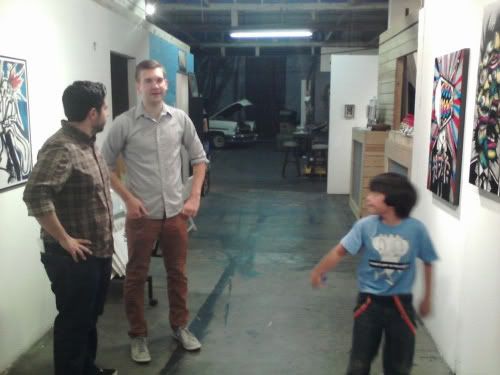January, 2007. A restless afternoon. I wander. I get in my truck and just drive, wasting gas, hurting the environment. But I feel this restless compulsion. I drive, looking for a place to read and draw. A place to get a cup of coffee that isn’t Starbucks or The Coffee Bean and Tea Leaf. I’m tired of Fullerton. I pull through the parking lot of an enormous shopping center. I wander, looking into store windows. Nothing looks good. Nothing feels right. I am looking for something I cannot find. I am looking for a happiness that lies outside consumption. How did we get here? I do not like the world I live in. Everything seems to revolve around consumption.
...
Up until about 1920, the industrial revolution allowed companies to provide basic goods and services to a booming population in America. But what happened when the industrialized society achieved this goal of providing for most people? What happened when production capacities grew larger than the nation’s actual needs?
UCI history professor Spencer Olin explains, “Industrialists thus faced a crisis. The solution lay in transforming the living patterns and consumption behavior of the masses. Starting in the 1920s, producers began to slant their advertisements toward the symbolic value of products as well as toward their functional utility. The mass media enabled advertisers to broadcast their messages throughout the nation, while local markets gave way to nationwide retail chains. Commodities became indices of success, and the masses became consumers in the sense that they adopted the task of maintaining life-styles designed and advocated by the advertisers.”
This trend toward a culture of excessive consumerism (and away from any other kind of culture) continued and grew everywhere in America, and became particularly intense in Orange County. Olin continues, “Between the mid-1960s and the mid 1970s, six huge regional shopping centers opened in Orange County...In the 1970s and early 1980s, these regional shopping centers boomed. By the fall of 1987, Orange Countians spent more per capita at retail stores than the residents of any other county in California.”
During these years, one’s social status was largely determined not by what one contributed to the world, but rather by what kind of car one drove, the size and location of one’s house, and the clothes one wore. As wealth increased in Orange County, peoples’ tastes became increasingly cosmopolitan. Olin observes, “Orange County’s new cosmopolitan consumerism, like its counterpart in major North American metropolitan areas, is characterized by the PURCHASE of novel and often expensive foreign products rather than by the IMMERSION in the arts, politics, and languages of other cultures.” In other words, a man may drive a $100,000 Mercedes but have no idea who Goethe was.
...
October, 2011. I am sitting in Max Bloom’s Café Noir, an independent 1940s-style coffee house in downtown Fullerton. I am reading from a book I picked up at the library and I am writing. I am thinking about the changing face of Downtown Fullerton in the past few years. The emergence of art galleries, of independent coffee shops, and storefront theaters, even a full-blown and growing Downtown Fullerton Art Walk. I think about the fact that I co-own an art gallery and a book store that make me no profit, and how I am okay with this. I make a low to moderate living as a teacher, and I am content with my income. I am thinking about the community here. Not “community” as a real estate marketing slogan, but as a growing social reality. If there is any hope for escape from the shallowness of a consumer culture, I can see traces of that hope right here, in the town I live in, and it is not about being rich. It is about being genuine and creative and open-minded and open-hearted. That is the only hope I can see, and I have seen it.

Chuck Oldfield, Landon Lewis, and Ezra Prince at the Downtown Fullerton Art Walk 10/7/11
